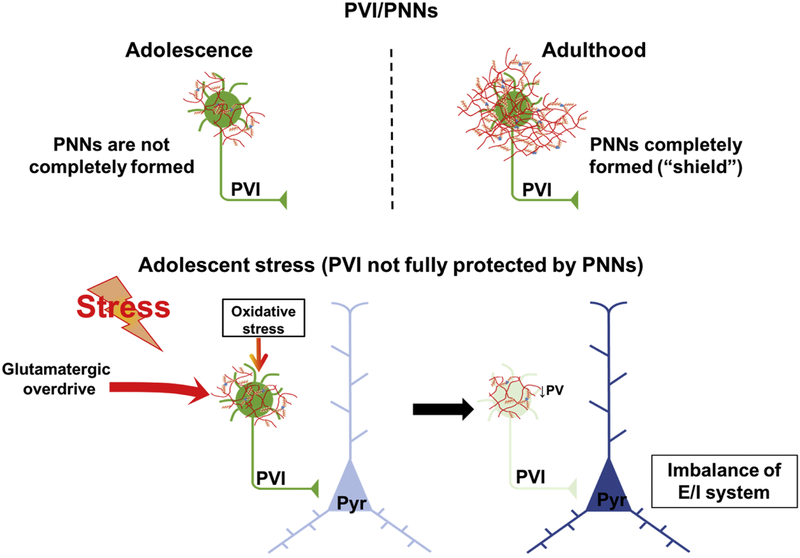Figure 2 –
During critical periods parvalbumin interneurons (PVI) are more vulnerable to stress. This vulnerability continues until the closure of the critical period by the perineuronal nets (PNNs), a glycosaminoglycan matrix sheath that surrounds PVI to end the plastic phase, but also protect PVI from metabolic and oxidative damage. Thus, during periods when PNNs are not yet fully formed, such as adolescence, the exposure to stress can increase the oxidative stress and cause aberrant excitation onto PVIs in the vHipp, for example, leading to PVI damage/loss. This in turn results in deficits in the excitatory/inhibitory (E/I) balance producing pathological changes related to schizophrenia. In adult animals, similar insults to the PVIs would not produce the same results, as PVIs are largely protected by the PNNs from damage.

